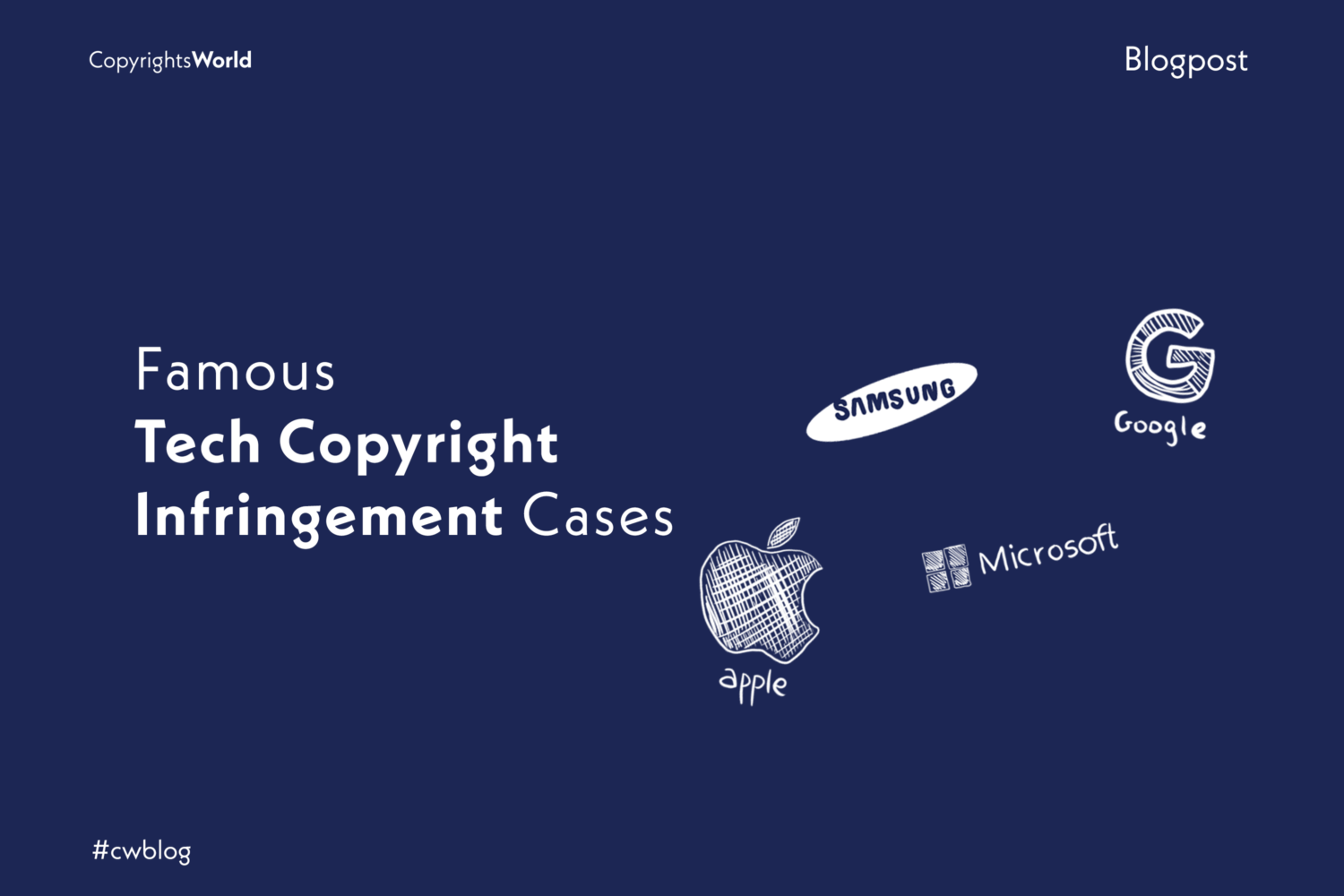This article is part of our series showcasing well-known copyright ownership cases from the music and film industries, technology, and more.
This week’s post looks at three well-known copyright infringement cases involving tech giants battling each other over ownership rights.
Apple vs. Microsoft
The battle between these two tech giants began with a simple question: “Who invented the graphical user interface (GUI)?” That’s because the company that controlled the interface of the next major operating system would be the one to set the standards for application software. Unsurprisingly, Apple tried to stop Windows from becoming a major operating system.
Although Microsoft helped develop Macintosh, Jean-Louis Gassée, who had taken over from Steve Jobs at the time, refused to allow Microsoft to use Apple’s software. Bill Gates pressed on nonetheless, deciding to add in features of his own.
When Gassée saw the software, he was enraged but didn’t want a lawsuit, so he ended up agreeing to license the interface. However, Windows 2.0 turned out to be almost identical, and Gassée believed this to be a breach of contract. You see, Apple had only allowed its software to be used on Windows 1.0 – and not future versions.
So, without warning, Apple filed a lawsuit against Microsoft in 1988. This lawsuit contained 189 visual displays that infringed copyrights. This led to a six-year legal battle, culminating in 1989, with the court ruling that 179 of the 189 disputed displays were covered by the existing license, and the remaining 10 did not violate Apple’s copyright.
This was due to what is called the doctrine of merger – where the idea and the expression of the idea are separate. The same idea can be expressed in countless ways.
The court ultimately ruled in Microsoft’s favour on August 24, 1993.
Case: Apple vs. Google
Apple is no stranger to court proceedings, especially against Google. Steve Jobs repeatedly called Android a “stolen product” that he was “willing to go thermonuclear war” over.
Things got so heated between Apple and Google that former Google CEO (and current chairman) Eric Schmidt stepped down from his position on Apple’s Board of Directors.
When Apple sued Samsung in 2010, Google had to step in and help Samsung partly due to a ‘Mobile Application Distribution Agreement’ that gave “partial or full indemnity with regard to four patents.”
At the same time, Motorola sued Apple, accusing the tech giant of infringing several patents, including how cellphones operated on a 3G network. On the other hand, Apple claimed that Motorola violated its patent to certain smartphone features.
The copyright case was dismissed in 2012, on the grounds of insufficient evidence, when Google acquired Motorola.
So far, frustrated judges have thrown out the Apple vs Motorola case three times, telling them to solve their problems between themselves.
Apple didn’t’ attack Google directly, but instead went after companies selling Android devices. Yet, the search giant has always been very intent on defending Android.
In 2014, Apple and Google released a joint statement saying that it had agreed to settle all patent litigation with Apple and would even “work together in some areas of patent reform.”
Case Apple vs. Samsung:
The Supreme Court presided over a few major technology cases in 2019, but in one of the most important ones, it reversed a ruling that found Samsung liable to pay its profit from the entire line of Galaxy phones in 2011.
The devices were found to infringe on Apple’s design patents that cover the front of the phones, and the arrangement of icons on the home screen.
In this case, Justice Sonia Sotomayor noted that owners of design patents won’t always be entitled to the total profits from the infringing product. For example, the device has different components, so the award may be limited to specific infringing features.
Chief Justice Roberts argued that “the design is applied to the exterior case of the phone” – and not “all the chips and wires.” Therefore profits shouldn’t be awarded based the phone’s full price.
Apple in turn argued that design is central to many products and therefore a patent violator should hand over the full profits from infringing designs. Samsung, on the other hand, argued that penalties should be proportionate to the importance of the infringing features to the actual product.
The Supreme Court decided that things are not so clear-cut, as a liability in design patent cases doesn’t necessarily have to be “all-or-nothing.” Therefore, Apple and Samsung will have to go back to court to figure out what the appropriate amount of damages should be.

